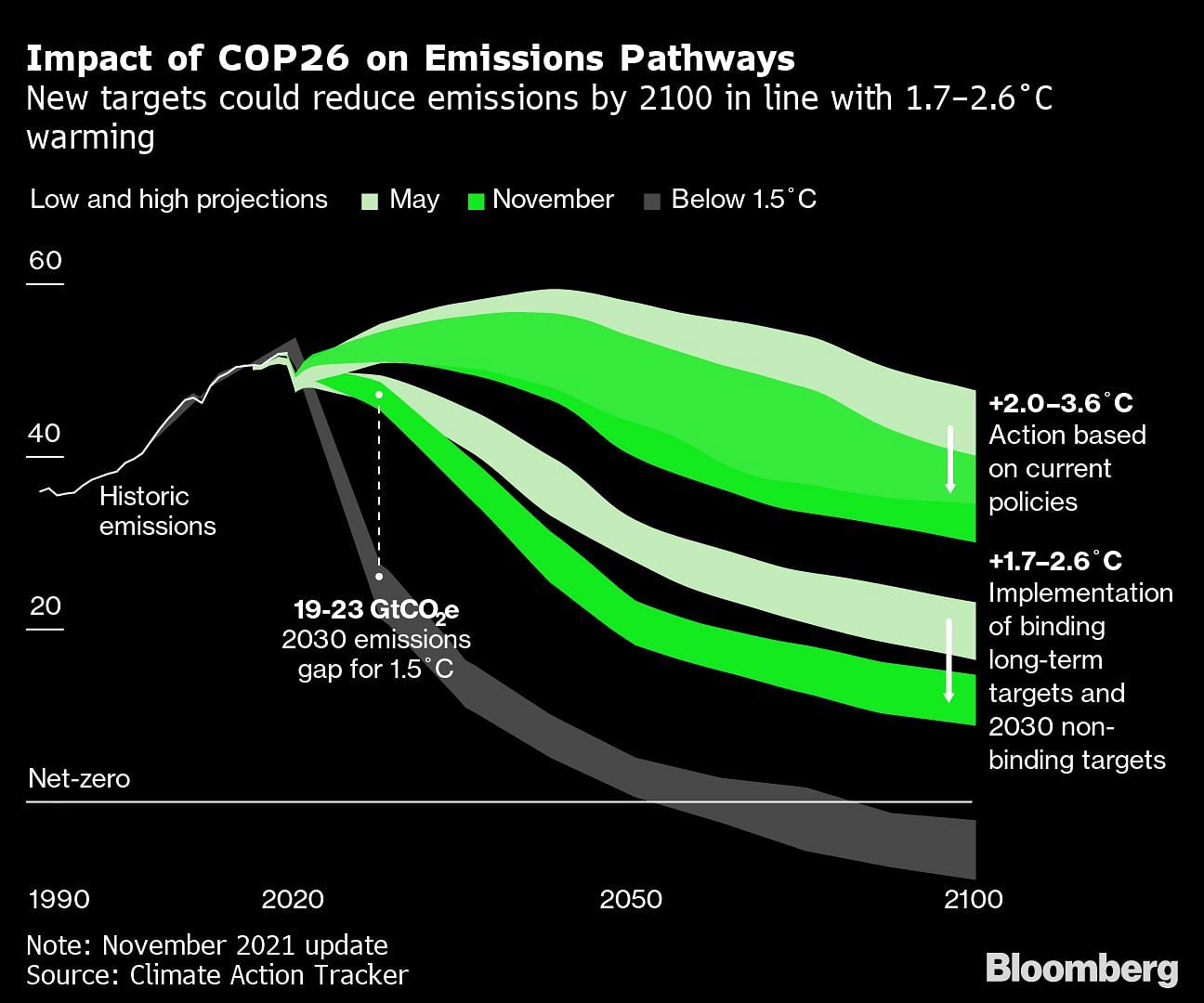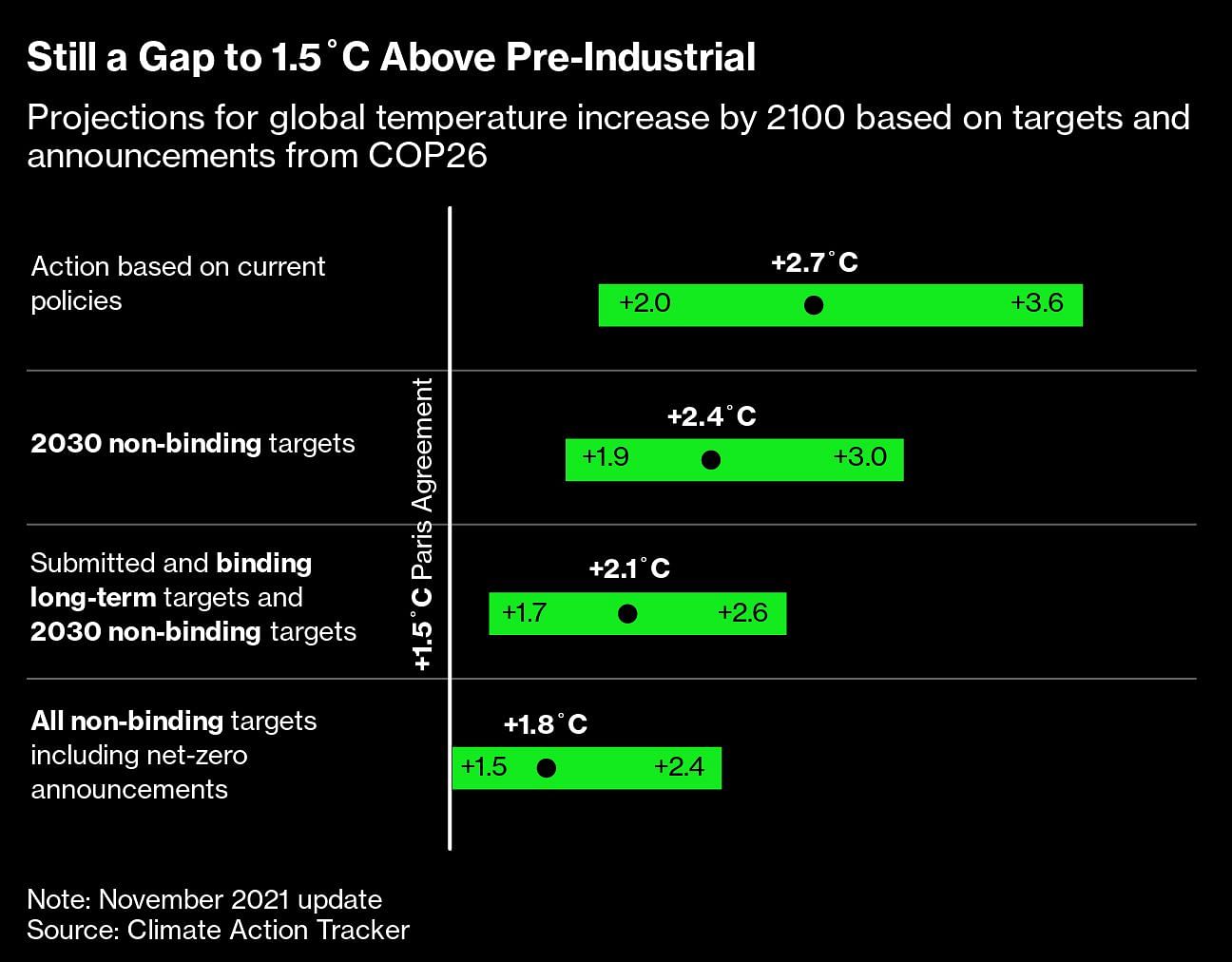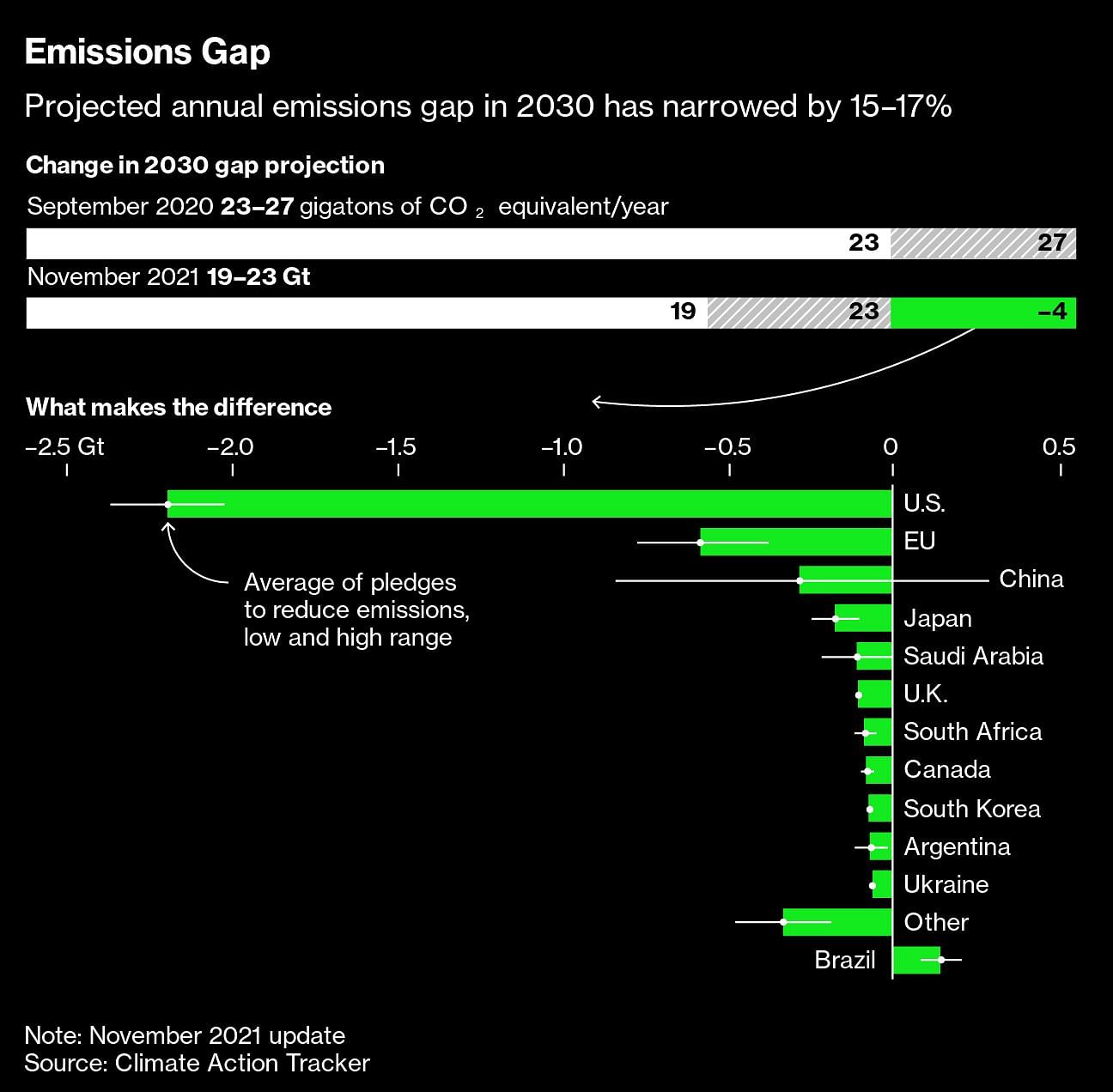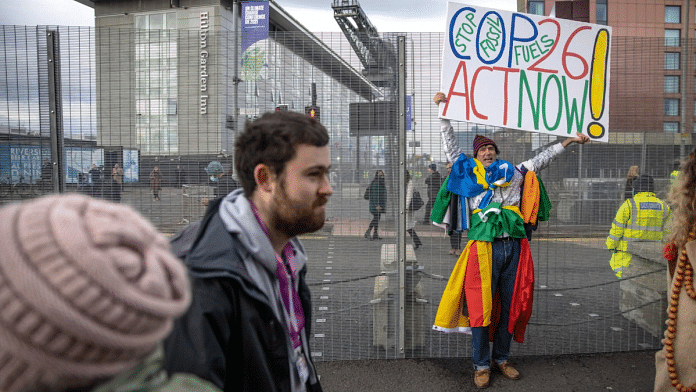New net-zero pledges made at United Nations climate talks have created a slim but viable hope that the world could avoid a crucial redline for climate catastrophe, according to a new analysis, but worse outcomes remain possible if countries don’t deliver on their promises.
One of the goals of the COP26 summit meeting is to keep alive the chance of limiting global warming to 1.5° Celsius from pre-industrial times. That’s the level scientists say gives humanity the best chance of avoiding the worst effects of climate change. Temperatures have already risen by 1.1°C, causing more extreme weather events such as wildfires, drought, and devastating floods.

The latest 2030 plans to curb emissions under the Paris Agreement framework still don’t go far enough, a Climate Action Tracker study showed on Tuesday. But if the 197 governments meeting in Glasgow deliver on everything they’ve announced, including long-term and short-term pledges, the planet will warm by 1.8°C. That’s a large improvement over the 2.1°C forecast by the International Energy Agency for warming prior to the ongoing climate talks in Glasgow.
Part of the problem is that countries can choose their own baselines and assumptions. Such variability makes it hard to tell whether, taken together, national commitments are enough to hit 1.5°C. To account for uncertainty, CAT’s analysts combined the promises under four scenarios. The best-possible outcome of 1.8°C reflects fulfillment of a slew of new net-zero pledges from some of the world’s biggest polluters, even though many lack in details. Almost 90% of global emissions are now covered by commitments to reach carbon neutrality, according to BloombergNEF.

Also read: Humans are compressing millions of years of natural change into just a few centuries
Another scenario takes into account only net-zero goals that were formally submitted to the UN, in documents known as Nationally Determined Contributions. In this scenario, warming rises to 2.1°C. India, the world’s third-largest emitter, announced 2070 net-zero during COP26 talks goal but hasn’t formally submitted the new target to the UN.
CAT’s temperature forecast increases to 2.4°C when counting only 2030 targets in NDCs. Those pledges cut emissions by as much as 17%, far less than the 50% that’s needed to hold temperatures to the 1.5°C goal under the Paris Agreement. A UN analysis of NDCs submitted before COP26 put warming at 2.7°C.
All the temperature outcomes are still obscured by large uncertainties. Scientists can’t precisely predict just how much warming could be triggered by a certain amount of greenhouse gases in the atmosphere. In just the most optimistic scenario, warming could be as low as 1.5°C or as high as 2.4°C. The difficulties in predicting future global warming is why experts advocate for deeper emissions cuts as soon as possible.
The biggest absolute contributions to the drop in near-term emissions came from pledges made by China, the U.S. and the European Union. Some countries, such as Indonesia, did not submit stronger targets while others, including Brazil and Mexico, actually lowered their ambitions, CAT said. Countries including Turkey and Kazakhstan did not submit new pledges.

Fossil fuel giants Saudi Arabia and Australia also made pledges to zero out emissions, in 2060 and 2050, respectively. But Australia didn’t upgrade its ambition for the end of the decade, and CAT says Saudi Arabia’s goals are “difficult to assess” because of a lack of clarity about how it’s measuring reductions.
The discrepancy between distant net-zero goals and short-term targets is a problem, says Bill Hare, chief executive of Climate Analytics, a CAT partner organization.
“It’s all very well for leaders to claim they have a net-zero target,” he said, “but if they have no plans as to how to get there, and their 2030 targets are as low as so many of them are, then frankly, these net-zero targets are just lip service to real climate action.”—Bloomberg
Also read: Lack of serious approach to climate finance will jeopardise net zero pledges, India says



